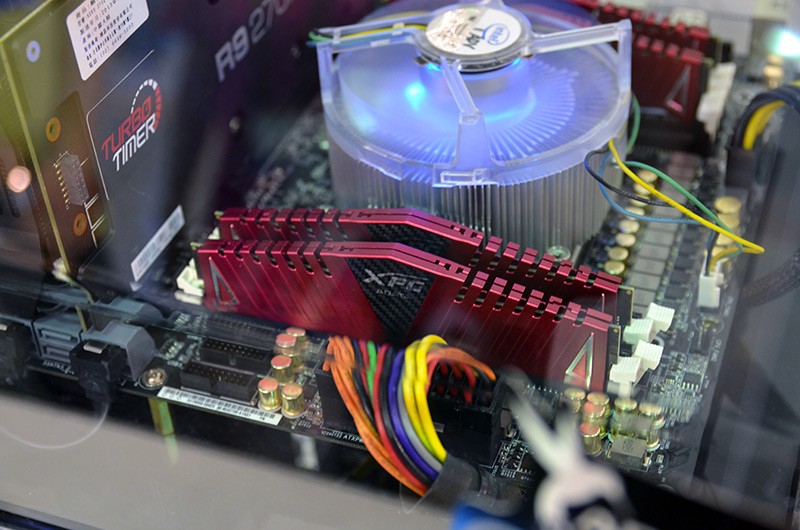No consumer products support DDR4 memory just yet, but that hasn’t stopped several of Computex 2014’s exhibitors from showing off DDR4 modules of their own.
At G.Skill’s booth, the company showed off five engineering DDR4 samples behind glass: three 4 GB modules and two 8 GB modules with varying speeds. The entry level DDR4 units were clocked at 2133 MHz – well above a typical non-overclocked DDR3 module – and there were also 2400 MHz and 2666 MHz modules on display.

Over at Adata’s booth they had on display their XPG DDR4 modules actively running on a prototype motherboard, which unfortunately the company refused to detail for us (although it’s likely an Intel X99 board). A sticker on the display indicated these are the world’s first overclocking-compatible DDR4 modules, although there’s no word on when they’ll be available.
DDR4 will first come to server platforms shortly, before it becomes supported on Intel’s X99 enthusiast platform for Haswell-E processors towards the end of 2014. As for mainstream support, you’ll have to wait until 2015 before you can chuck DDR4 modules in your typical desktop PC.
https://www.techspot.com/news/56993-ddr4-spotted-at-computex-from-gskill-and-adata.html
